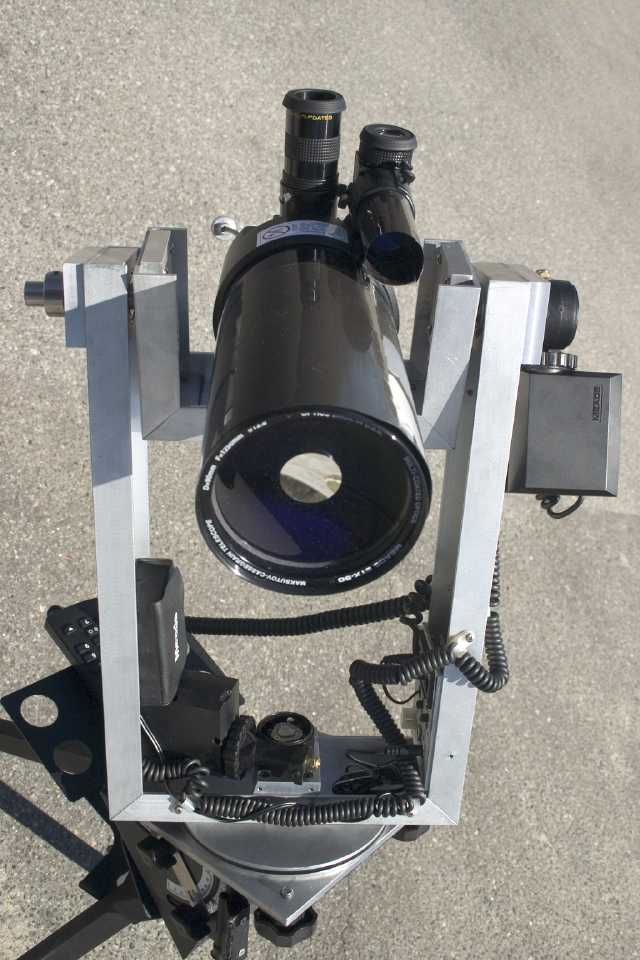Last updated: 22 April 2005
|
Last updated: 22 April 2005 |
Subject: How not to buy an ETX-90 AT! From: Dave Wallace (d_wallace@ecrm.com) Date: April 19, 2005 13:28:52 PDT I just thought you might find this amusing, Mike. It's my ETX telescope. The OTA is an ETX-90 spotting scope. The motor set and autostar are from the now-obsolete 893(?) kit designed for the DS-series telescopes. The fork is home-brewed, using techniques mentioned on Steve Bedair's site. (The fork arms are deliberately overly long: I wanted to be able to mount a DSLR at the rear cell's prime focus. As an extra benefit, the OTA can be pointed at declination -90 which makes the whole thing no bigger than the fork itself when it comes time to transport it.) This is certainly not a cheap way to buy an ETX-90, but it was an interesting project.And more:One feature of this arrangement: all the electronics is sitting inside the fork. The motor turns around a fixed RA shaft. There are no wires to twist (and therefore no hard stops are required). You just have to watch out for cord wrap on the Autostar cable or any external power connection. Results are more than acceptable, now that all the bugs have been shaken out. I can align well enough to position the telescope at any astronomical target to within the FOV of a 15 mm eyepiece. If I'm careful enough about getting the mount level and aimed north, the tracking is pretty much dead on. Vibration damping is excellent and the mount is very rigid, thanks to the use of aluminum U-channel for the structural members and a 6" diameter delrin disk as the RA bearing plate. And, of course the scope has the lovely Meade optics! 
Yes, that was declination -90 above: the telescope can be pointed so that it's looking at the RA bearing; there's no mechanical limit to DEC because the telescope will clear the components in the bottom of the fork. So you can spin the telescope through 360 degrees about both the RA and DEC shafts forever if you want. This "feature" fell out of having made the fork long enough to accommodate a DSLR on the T-adapter. With the scope contemplating its navel, so to speak, the overall package is only about an inch longer than the fork itself. Speaking of which, the overall dimensions of the fork are about 10" wide by 16" long. The base plate is a tad under 7" square, with the RA bearing being 6" in diameter. I haven't weighed it, but I'd estimate that the mount and telescope together weigh between 10 and 15 lbs. -- most of the components are aluminum (though I used 5/8" stainless steel rod for the RA and DEC shafts). I have no trouble moving the scope around while it's attached to the JMI MegaPod that serves as its platform. Another unique feature of the design: there are no clutches! I couldn't come up with a sufficiently reliable clutch design. Given that there is no mechanical interference issue in the motion of the telescope, there's really no requirement for a clutch in the drive train. So I turned a bug into a feature and did without them. It turns out that you can position the telescope to polar home position electrically and the autostar is perfectly happy with that, provided you do your positioning before hitting enter to the polar home position prompt during the alignment process.
Return to the top of this page.
Go back to the Tech Tips page.
Go back to the ETX Home Page.